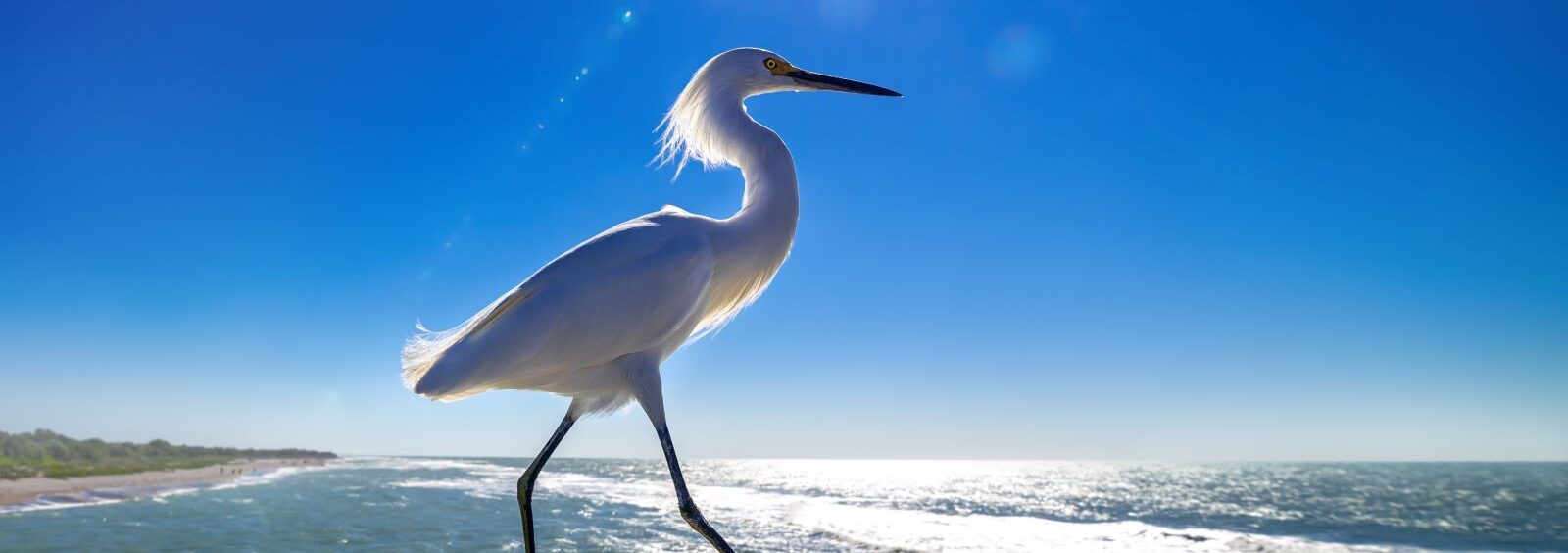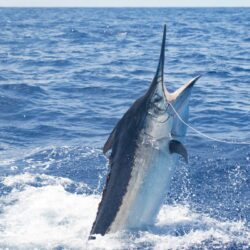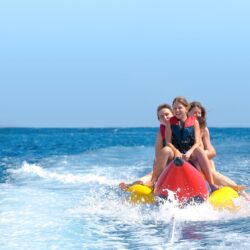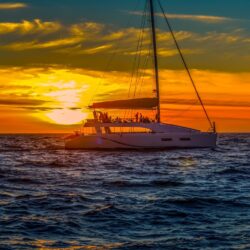When you need a break from the events in Anna Maria Island, relax on the beach and meet some of our beautiful shorebirds. These families love making stops on our beaches while migrating and can also be found inland. Just step outside any one of our Anna Maria Island vacation rentals; chances are you will spot at least one of these popular water birds.
Osprey
The beaches of Anna Maria Island are home to osprey, a large hawk with brown wings and a white underbelly and legs. The head is also white with a wide line of brown parting the eyes and stemming to a black hooked beak. Their black talons have a strong grip, which helps them catch fish – the sole staple of the osprey’s diet.
Osprey can be found nesting in huge trees or atop platforms. When fishing, they hover for a moment over the water before jetting down talons-first and hooking the fish, which they carry back to the nest.
Black Skimmer
While fishing on Anna Maria Island, you might see a black skimmer searching for fish. These shorebirds can be identified by their long wings and black-and-white feathers.
They hunt by first opening their large bills, then putting their lower mandibles into the water. They’ll skim the surface until they get a fish. This touch-based fishing helps them catch food day or night. In fact, these birds are most active around dawn and dusk! Spotting a black skimmer is quite an experience.
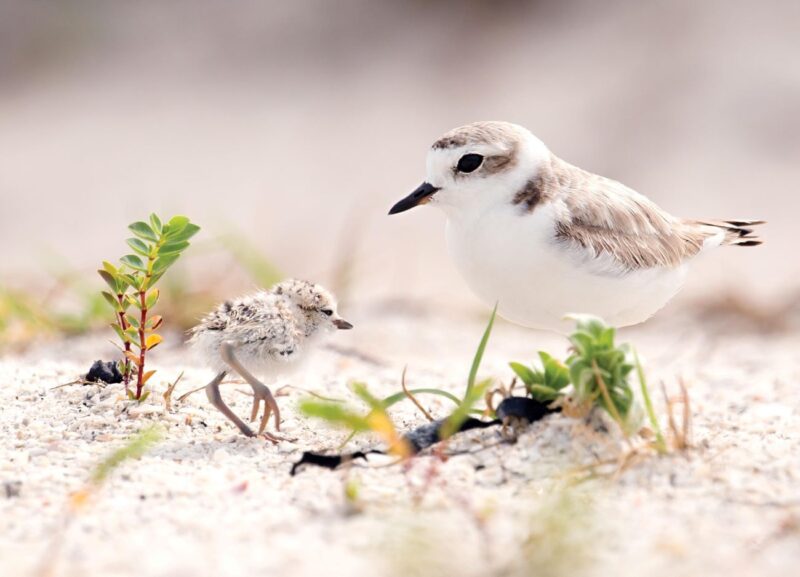
Snowy Plover
The snowy plover is possibly the cutest bird you will spot during your Anna Maria beach vacation. This small bird prefers aquatic invertebrates and like getting cozy in the looser areas of warm white sand.
You can tell the breeding adult from the nonbreeding adult by their plumage. The nonbreeding adult has gray areas up top and whiter plumage below. The breeding adult has a darker crown stripe and a brighter underbelly.
American Oystercatchers
The American oystercatcher is known for its vibrantly colored red-orange-yellow beak. It has red-yellow eyes to match! These shorebirds are the only ones here who can open oysters and clams with their bills. However, they tend to garner attention from other shorebirds in the area who either want to steal or share the oystercatcher’s food.
While these birds do get a lot of oysters and clams, these shellfish sometimes clamp down on birds’ beaks and hold them in place until the birds free themselves or get sucked up in a tide.
Least Tern
The least tern is one of the less frequently sighted birds on AMI’s shoreline. Unfortunately, their population is declining. Between 1966 and 2015, their numbers dropped by a staggering 88%. They are now a Species of High Concern, so those of us on the island tend to get excited when we see families of least sterns.
Plan Your Vacation
Are you ready to plan your next beach getaway? Find the perfect Anna Maria Island vacation rental for you and your family. Browse all our rentals and get started today!
These birds like to dive into the water to catch small invertebrates and fish. The breeding adult has narrow wings and a black crown upon its white forehead. Their bright yellow bills have black tips. Their chicks are the cutest fluffballs you’ll ever see, but they tend to leave the nest after about two days.
Red Knot
The red knot is an unusually rotund sandpiper that, come summer, has beautiful orange plumage poking out from beneath black and gold upper areas. They like to winter in beaches stemming from North Carolina down to Florida, so if you come in the cooler months, you might see one!
Red knots are a ‘threatened’ species as they’ve lost breeding and non-breeding habitats, encounter more timing issues during the migration, and have less prey in non-breeding areas. They can swallow whole mollusk shells and use their gizzards to crush them in their stomachs. Watching this happen is one of the most unique fall events on Anna Maria Island.
Are you going to be staying in one of the Anna Maria Island pet-friendly rentals? If so, your dog will probably get a kick out of seeing these shorebirds. Just imagine their delight – and yours – upon finding one of these friendly fellows perched on your deck rail or riding the waves under the warm Gulf Coast sun.

